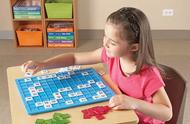Hello~同学们!
为了更好的帮助大家通过面试考试
从今天开始,
将每天为大家整理各个学科和学段的教案模板
有没有很贴心!
昨天呼声最高的是“小学英语”
至于,下次推送哪个学科完全由你定
还不赶快留言,老师将选取呼声最高的哦!

《Can I...》教案
1.题目:
2.内容:
Amy: Mum, can I have a drink?
Mom: Yes, you can. Here you are.
Amy: Can I have an ice cream, mum?
Mom: No, you can’t. No ice cream.
Amy: Can I go to shop an ice cream?
Mom: No, you can’t! You are ill. But you can have these biscuits.
Amy: Thanks mum.
3.要求:
(1)全英授课
(2)须互动环节
(3)锻炼学生表演和口语表达能力
Teaching aims:
Knowledge aim: students can know the function of inquiry and refusal by leaning key sentence: can I... Yes, you can; No, you can`t.
Ability aim: students can use these key sentences into real life.
Emotional aim: students can get more confident about English and cultivate awareness about politeness.
Teaching key point &difficult point:
key point: students can know how to ask for permission and express refusal.
Difficult point: students can put these sentences into practice.
Teaching Procedures:
Warming-up
Hello, everyone! It`s your beloved English teaching teacher Albert. Nice to see you guys again. Before this class, I want to share an interesting story with everyone. It`s about my sister. You know, My sister loves foods so much, especially the sweet foods such as candy, donut, and so on. Every time she got change, she just grasps her money and rush into the candy shop. Day by day, she is getting heavier and heavier. Every time she asked my mom “ mommy, can I have some change for an ice cream?” every time my mother was depressed and answer “No, you can`t honey”. Then I would can`t help laughing. It`s interesting, right? I guess sometimes you guys also have such kind of request. In order to improve your skill for requesting, lets start our new class. Can I...
Pre-listening
Now, guys, look at the screen. Here is a picture. What in it? Alex, you please. Yes, Alex said “there`re so many foods and a little girl with her mom”. Good job. As Alex said, can you guys have a guess? What are they talking about? Foods? Argument? Ok, let’s keep it as a riddle. Next, we`re going to uncover this riddle.
While-listening
Now we are going to listen to a tape for twice. During the first time, you guys need to check your prediction and answer me that what are they talking about. Are you ready? Lets begin.
Ok, time to answer my question. Coco, you please. Well, you still think that they are talking about foods. Well, you may say so. Sit down please. Anyone else? Ok, Tina. You say the girl is asking for food from her mother. Perfect! You`re very good at catching information. Ok, you two did a really good job.
Now, we are going to listen to the tape again. After listening, you just need to answer my questions. What does Amy want? What does Amy finally get? Ready? Go!
Well, time is up. Who can answer my first question? What does Amy want? Good, Nina, you please. Well, Nina said Amy wants drink and ice cream. Excellent! You are such a smart girl. Now, the second question. What does Nina finally get? Christina, please. Brilliant! Biscuit, right. I know you can do it.
Post-listening
We have finished this tape. Their conversation is quit interesting, ha? I just thought my sister and my mom. Do you guys want to do a role-play? Yes? Ok, two students in one group. One is Amy, the other is Amy`s mom. Lets do a role-play. You have 3 minutes. After this, i will invite one group to show us.
Well, time is up. Volunteers? Ok, group banana. Very good, your performance is excellent. I`m so proud of you.
Summary & Homework
……
《what time is it?》教案
Teaching aims:
Knowledge aims: Grasp the new words and phrase: music class, PE class, English class, breakfast, lunch, and dinner.
Ability aims: students’ listening and speaking abilities will be improved and can understand the directive and do the corresponding activities.
Emotional aims: Improve students’ confidence of learning English and help them arrange time properly.
Key & difficult points:
Key points: Master the new words and phrases and the usage of the sentence structure “ It’s time for…”
Difficult points: Apply them into daily life.
Teaching methods: Audio-lingual teaching method, communicative teaching method, TPR teaching method
Teaching procedures:
Step1: warming up
Sing a song
Sing a song named “Ten little Indian boys” to review numbers. Then ask students to read the numbers. Draw a big circle on the blackboard, then I ask: what is it?
Ss: It is a clock. Then lead into the new lesson, “what time is it?”
Step2: presentation
Activity1: new words.
First, I will act as a clock with my arm, and let students speak out what time is it. Then draw some pictures such as a glass of milk, rice, ABC to present my new words and explain them one by one.
Activity2: new sentences:
1.I point to the clock and ask “what time is it?” , and students answer “It is __. It’s time for_-__”. Practice the sentences several time. Write down them on the blackboard.
2. Ask and answer.
S1 : What time is it?
S2: It’s 12 o’clock.
Ask some students to answer.
3.sing a song with the new sentences just like two tigers and teach ss to sing this song remember the sentences.
Activity3: make dialogues
Work in pairs , I will give students 5minutes to prepare the dialogue using the new words and sentences. Then ask volunteers to show their play in the front.
Step3: Consolidation
Activity1: show a picture of Zhang Pen’s day. Today, Zhang Peng does different things.
T: What does Zhang Peng do on the day? Let’s see together.
(Present the picture of the clock)
T: What time is it?
Ss: It’s 7o’clock.
T: It’s time for breakfast.
Teach ss “time for breakfast, drink some milk”(read and do the action).
Point to the other time and ask .
Activity2: Play a game. let’s do.
Teach students a chant with action. Just like this
It’s time for breakfast.
Let’s drink some milk.
It’s time for lunch.
Let’s eat some rice.
Then sing and do with the whole class.
Step4: Summary and home work
Conclude what we have learnt today. Ask ss to conclude with me together. And tell them to arrange time properly and have a good habit.
Homework: let students sing the chant to their parents.
Blackboard design:
《小学英语教学设计通用模版》教案
【小学英语教案设计的步骤与内容】
课题:______
课时:______
课型:______(新授课/复习课/检查课)
(一)教学目标
1.知识与技能
(1)能听、说、认读______等单词,并能在日常生活中使用。
(2)能听懂、会说______等句子, 并在实际情景中运用。
(3)了解西方______(如,节日、风俗等)的有关知识。
2.过程与方法
(1)能通过图画/动作的提示,听懂/读懂简单的短句/小故事。
(2)通过角色表演/小组活动,增强表达和交流能力。
(3)能初步使用简单的英汉词典,辅助学习。
3.情感态度与价值观
(1)培养学生听英语、说英语的兴趣,增强学生学习英语的信心。
(2)使学生意识到学习英语的重要意义。
(3)培养学生的______情感/习惯。(与课题相关,如爱护环境)
(二)教学重难点
1.教学重点
______单词的听、说、认读。
2.教学难点
(1)单词_____等的发音。
(2)句型______在实际情景中的运用。
(3)语法______的掌握。
(三)教学过程
1.热身准备
通过歌曲/视频/游戏的方式,导入新课。
2.呈现新知,合作互动
(1)教师以卡片形式逐一呈现单词:______,听录音,模仿单词的升降调发音。
(2)挑选个别学生展示单词的发音,及时纠正发音,表扬和鼓励学生,培养学生大胆说的习惯。
(3)以教师领读,学生跟读,小组展示等多种形式展开学习。
(4)教师读句子,让学生在语境中感受单词______的意思及用法。
(5)播放班班通,让学生整体感受课文的内容。
(6)教师讲解、领读课文内容,让学生根据教师设计的问题做出相应的回答。并在情景中感受短语/单词______的意思。
(7)整体齐读,结合小组展示等多种形式,加强学生朗读的能力的培养。
3.巩固新知,拓展练习
(1)结合生活情境,设计游戏______,用所学的单词或短语进行简单的交际。
(2)模仿范例写句子。
4.课堂延伸
(1)听录音,读、背单词、句子。
(2)在生活中使用所学单词、句子。
(四)板书设计
课题:______
单词:______
重要句子:______
以上是小学英语面试教案及模板!希望对同学们有所帮助,更多学科教案设计,关注之后的推送哦!同学们想知道哪个学段和学科的教案,也可以留言哦!
,











